Best of India Tours
- Golden Triangle Tour- Best of India & Nepal
- Classical Rajasthan
India Cultural Tours
- Images of North India- Karnataka Heritage
- Rajasthan & Goa Tour
Discover India Tours
- Grand India Tour- North to South India
- Central to South India
Rajasthan Tours
- Classical Rajasthan Tour- Golden Triangle Tour
- Grand Mughal Tour
India Luxury Trains
- Palace on Wheels- The Golden Chariot
- India Deccan Odyssey
- The Indian Maharaja
- Royal Rajasthan on Wheels
Nepal Tours
- Glimpses of Nepal- Buddhist Pilgrimage
- Nepal River Rafting
- Destinations of Nepal
- Nepal General Info
India Wildlife Tours
- North India Wild Life- South India Wildlife
Tibet Tours
- Tibet Monastery Tours- Explore Tibet
- Destinations of Tibet
Spa & Yoga Tours
- Ananda in Himalayas- Yoga & Meditation
Adventure Tours
- Manali Safari Tour- Himalayan Trekking
- Horse Safari
Ooty
Chennai
![]() Chidambram
Chidambram
![]() Coimbatore
Coimbatore
![]() Kodaikanal
Kodaikanal
![]() Madurai
Madurai
![]() Mahabalipuram
Mahabalipuram
![]() Ooty
Ooty
![]() Pondicherry
Pondicherry
![]() Tanjore
Tanjore
![]() Trichy
Trichy
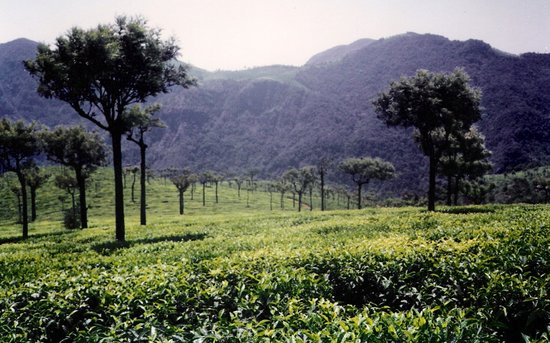
Nestled among the hills of Dodabetta, Snowdon, Elk Hill, and Club Hill in the Nilgiri ranges, Ooty (also Ootacamund or Udhagamandalam) is the queen of southern hill stations and a popular tourist destination of Tamil Nadu. The history of Ooty goes back to about 900 years when it was ruled by Vishnu Vardhana, the Hoysala king from AD 1104 to 1141. The city also finds mention in the writing of Jacome Ferico, the first European to visit this place in 1603. In 1799, this hilly region came under the control of the Ooty British East India Company. The British established Ooty to serve as the summer headquarters of the Madras government.
With the establishment of numerous tea estates in the subsequent years, Ooty made its presence felt in the tourist map of India. With the maximum temperature going up to 25°C, Ooty offers a pleasant climate throughout the year. One can visit this picturesque hill station at any time of the year though the ideal time is from February to May and September to November.
Sightseeing
Move around the town and revel in the scenic surroundings. The Botanical Garden is an ideal tourist spot besides being a source of information about the region’s flora. For those who like to enjoy boat rides and fishing, a visit to the Ooty Lake is a must. Besides these, there are various view points like Lamb’s Rock, Kodanadu and Dodabetta Peak that offer fascinating views of the surrounding plains and hills.
Excursions
Excursions around Ooty prove to be an equally interesting experience. A visit to the Mudumalai Wildlife Sanctuary gives you an idea of the region’s fauna and fauna. The trip to hill stations of Kotagiri and Coonor complement the visit to Ooty. Some of the other places you can go out for excursion are Kalhatty Waterfalls, Sim’s Park, Dolphin’s Nose, Mukurthi, and Avalanche.
Excursions for Ooty
Botanical Garden
The Botanical Garden of Ooty was established in 1848. The beautiful gardens maintained by the Horticulture Department of the Government of Tamil Nadu have wide variety of plants and include Italian and Japanese sections. Out here one can have a look at different types of roses, imported shrubs, rare flowering plants, eucalyptus trees and several old trees. One of the main attractions here is the fossilized tree trunk, which is about 20 million years old. During the month of May every year, a Summer Festival is held here. The major attractions of the festival are flower shows, cultural programmes relating to classical arts, and adventure sports like trekking.
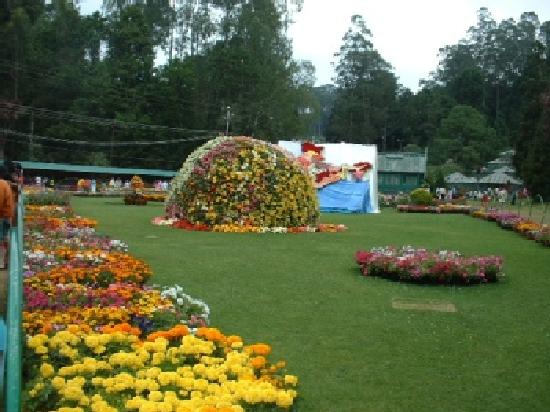
Ooty Lake
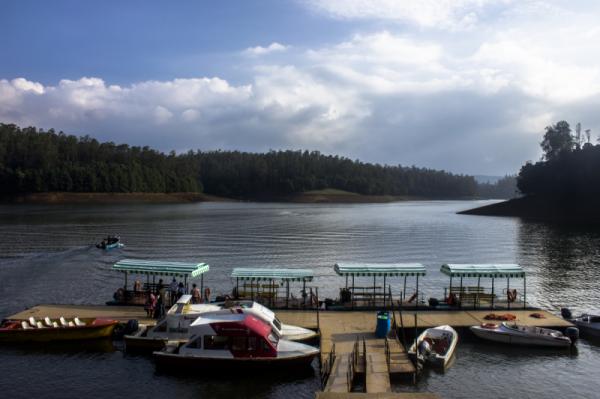
Built in 1825, the 2.5-km-long Ooty Lake is a place worth visiting. You can go for boating and fishing in this lake. However, for fishing you need a prior permission. A racecourse is also located near the lake. A mini-train takes the visitors around the lake.
Dodabetta Peak
At a height of 2,623 metres, Dodabetta Peak is the highest point in the district. Situated at about 10 km from the Ooty town, it is one of the most prominent view points around Ooty. The top of the peak remains covered by mist most of the time but on a clear day, you can have a look at the landscape as far as the plains of Coimbatore and the Mysore plateau.
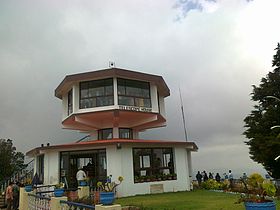
Lamb's Rock
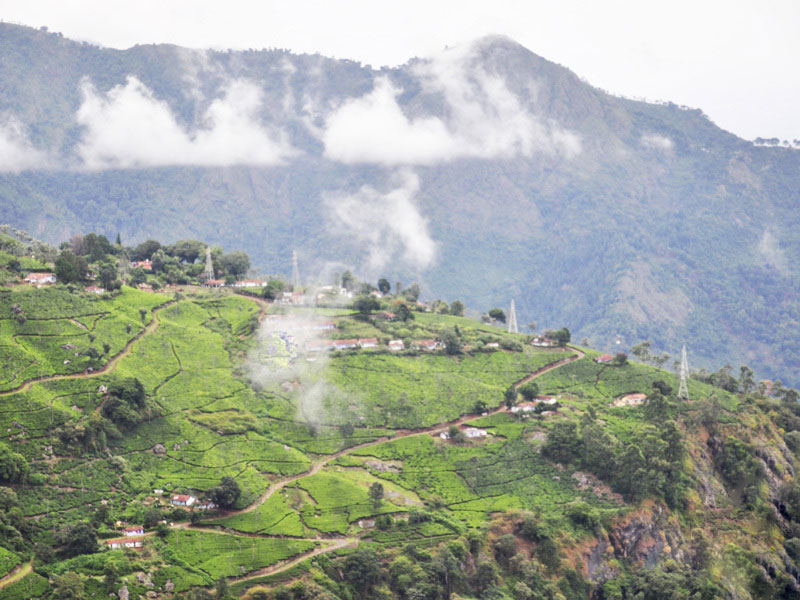
About nine kilometres from Coonoor lies Lamb\’s Rock, a viewpoint on a high precipice. The point offers stunning views of the Coimbatore plains and the coffee and tea estates on the slopes.
Kodanadu View Point
On the eastern edges of the Nilgiris, at about 16 km from Kotagiri, lies the Kodanadu View Point. You can get a panoramic view of the tea estates and the Moyar River from either side of the road. There is a watchtower from where you can view the Rangasamy peak and pillar.
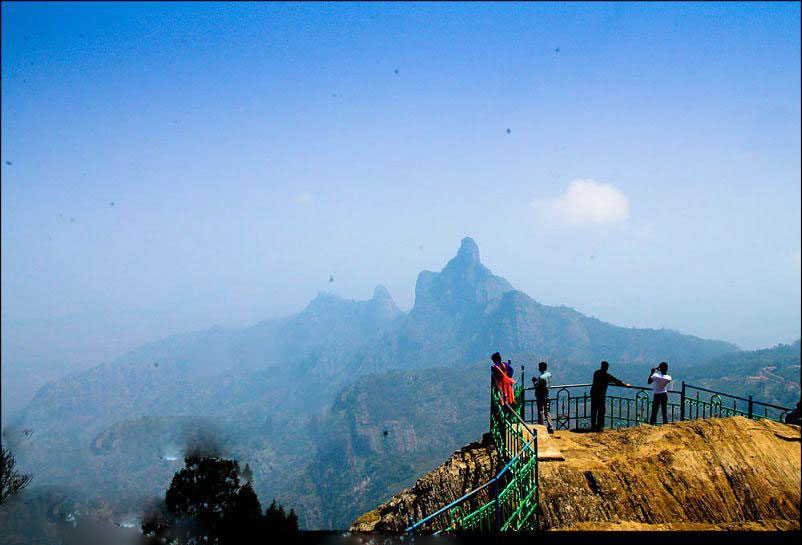
Avalanche
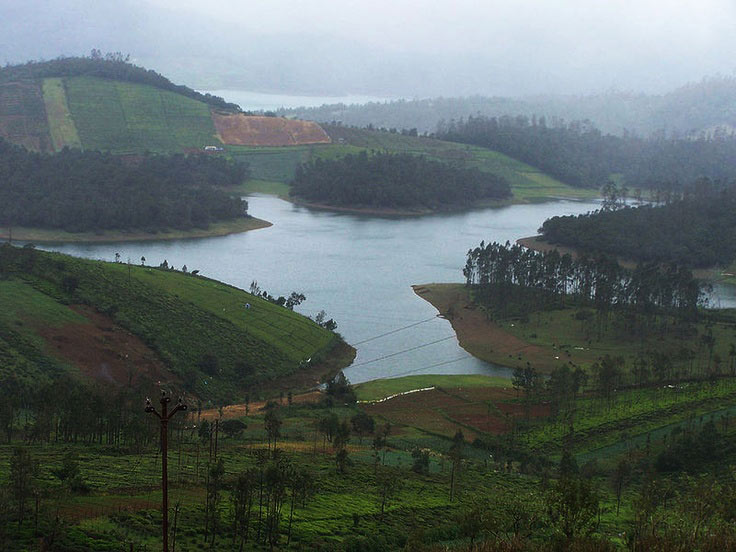
At about 28 km from Ooty lies Avalanche, a nature lover’s paradise. Here you can find a beautiful lake that is home to a wide variety of birds.
Coonoor
Located at a distance of 17 km from Udhagamandalam, Coonoor is the first of the three Nilgiri hill stations. Coonoor has an equable climate that makes this small town a popular hill resort. The main attraction here is the Sim’s Park, a well-maintained botanical garden.
Kalhatty Waterfalls
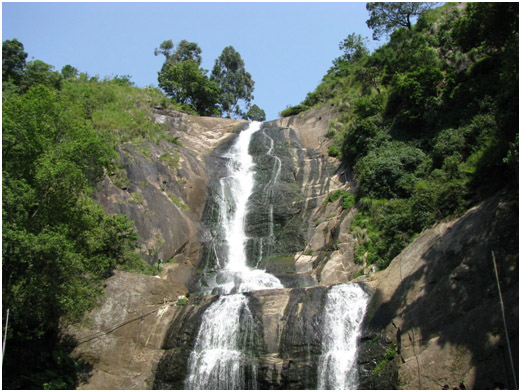
About 100 feet in height, the Kalhatty falls are located on the Kalhatty slopes at about 13 km from Ooty. In addition to the enchanting view presented by the falls, you can also have a look at wildlife that exists in the Kalhatty–Masinagudi slopes. The wild species include panthers, bison, wild buffaloes, wild dogs, spotted deer, sambhar, and different types of hill birds.
Kotagiri
About 28 km east of Ooty lies the quiet village of Kotagiri, the oldest of the three Nilgiri hill stations. The hill station is relatively calmer than the neighbouring Ooty and Coonoor. Kotagiri is surrounded by tea estates and tribal Kota settlements.
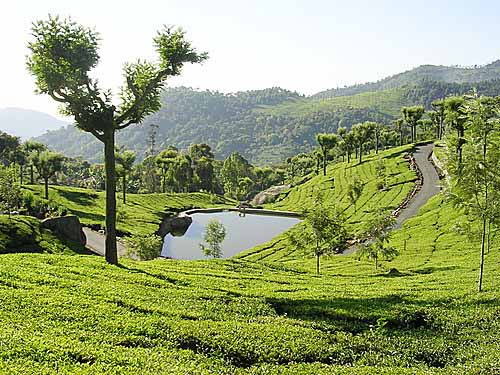
Mudumalai Wildlife Sanctuary
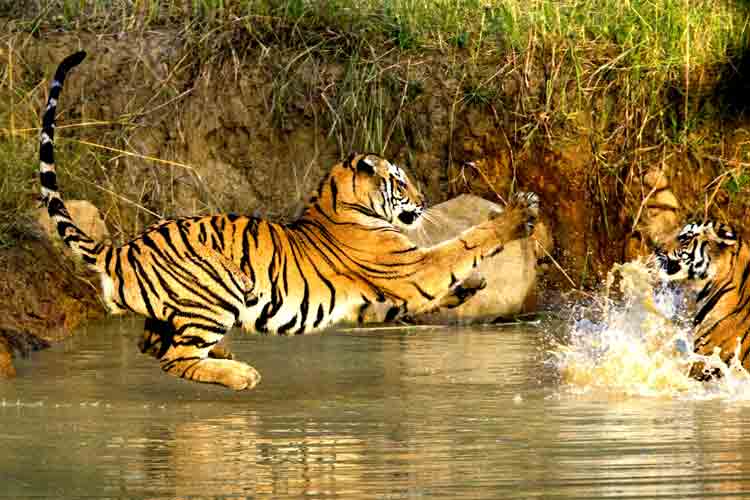
One of the most important wildlife sanctuaries in South India, the Mudumalai Wildlife Sanctuary is situated at about 67 km from Ooty. It is a part of the Nilgiri Biosphere reserve along with Bandipur National Park in Karnataka and Wynad Sanctuary in Kerala. Wildlife in Mudumalai is very similar to other sanctuaries in Nilgiris. The predominant species in this region are bonnet macaque and common langur. Tigers and leopards also reside here but are a rare sight. Other important species are giant squirrels, flying squirrels, elephants, gaurs, sambhar, chital, barking deer and mouse deer. The birds in the sanctuary include racket-tailed drongo, black woodpecker, parakeets, barbets, mynas, cuckoos, Malabar trogon, Malabar grey hornbill, crested hawk eagle, and crested serpent eagle.
An elephant camp called Theppakkadu is located within the sanctuary where you can find a rest house. You can also find accommodation at Tamil Nadu Tourism Development Corporation’s Youth Hostel and rest houses in Masinagudi, Abhayaranayam and Kargudi and the Bamboo Banks Farm.
Mukurthi
While in Ooty one should not miss a visit to Mukurthi, which situated at a distance of 36 km from Ooty. Here you can have a look at the majestic Mukurthi Peak. The flora and fauna of this area bear similarity with that of Himalayas. It is believed by the local Todas here that the souls of the dead and the sacrificed buffaloes move on to the next world from this sacred place. The Mukurthi Lake, which is 6 km in circumference, lies in the vicinity.
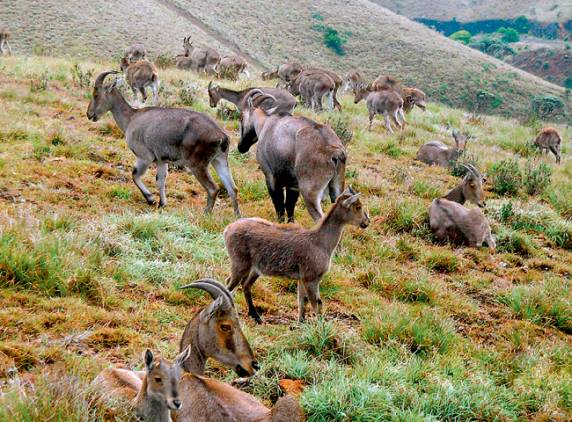
It is believed to have been originally on the altar of the old church destroyed by the Mughals. Legend relates that Father da Cruz and a pious Portuguese merchant used to pray before this image. After the fort was captured by the Mughals, the merchant, fearing sacrilege, took it from the altar, jumped into the Hooghly and swam across with it but was seen no more. One night, after the Portuguese returned to Bandel, a violent storm woke Father da Cruz. He heard his friend’s voice saying. ”Hail! Our Lady of Happy Voyage, who has given us victory! Arise, oh Father, and pray for us all!” On looking out of the window, he saw the river lit with a strange light and it seemed as if someone was coming towards the church. Early next morning, to the great surprise of Father da Cruz, he found the image of the Holy Virgin a few yards from the Basilica gate. He placed it on the altar immediately and a special festival was instituted to commemorate this miraculous event.
Fact File
 Area: 30.67 sq. km
Area: 30.67 sq. km
 Population:81,763 (1991)
Population:81,763 (1991)
 Altitude:2,286 metres above sea level
Altitude:2,286 metres above sea level
 Best Time to Visit:February–May and September–November
Best Time to Visit:February–May and September–November
 Languages:Tamil and English
Languages:Tamil and English
 STD Code: 0423
STD Code: 0423




